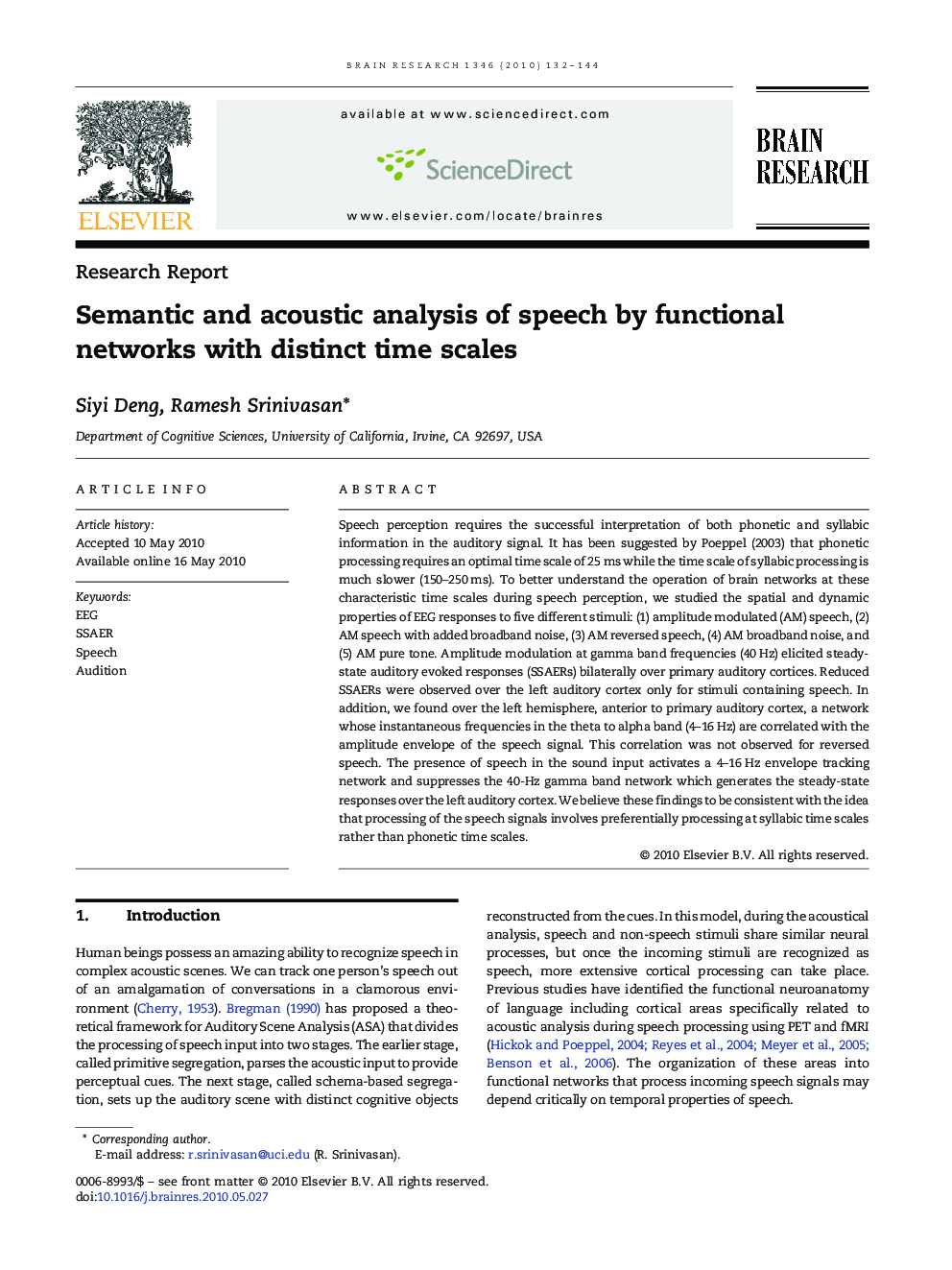| کد مقاله | کد نشریه | سال انتشار | مقاله انگلیسی | نسخه تمام متن |
|---|---|---|---|---|
| 4326664 | 1614093 | 2010 | 13 صفحه PDF | دانلود رایگان |

Speech perception requires the successful interpretation of both phonetic and syllabic information in the auditory signal. It has been suggested by Poeppel (2003) that phonetic processing requires an optimal time scale of 25 ms while the time scale of syllabic processing is much slower (150–250 ms). To better understand the operation of brain networks at these characteristic time scales during speech perception, we studied the spatial and dynamic properties of EEG responses to five different stimuli: (1) amplitude modulated (AM) speech, (2) AM speech with added broadband noise, (3) AM reversed speech, (4) AM broadband noise, and (5) AM pure tone. Amplitude modulation at gamma band frequencies (40 Hz) elicited steady-state auditory evoked responses (SSAERs) bilaterally over primary auditory cortices. Reduced SSAERs were observed over the left auditory cortex only for stimuli containing speech. In addition, we found over the left hemisphere, anterior to primary auditory cortex, a network whose instantaneous frequencies in the theta to alpha band (4–16 Hz) are correlated with the amplitude envelope of the speech signal. This correlation was not observed for reversed speech. The presence of speech in the sound input activates a 4–16 Hz envelope tracking network and suppresses the 40-Hz gamma band network which generates the steady-state responses over the left auditory cortex. We believe these findings to be consistent with the idea that processing of the speech signals involves preferentially processing at syllabic time scales rather than phonetic time scales.
Journal: Brain Research - Volume 1346, 30 July 2010, Pages 132–144